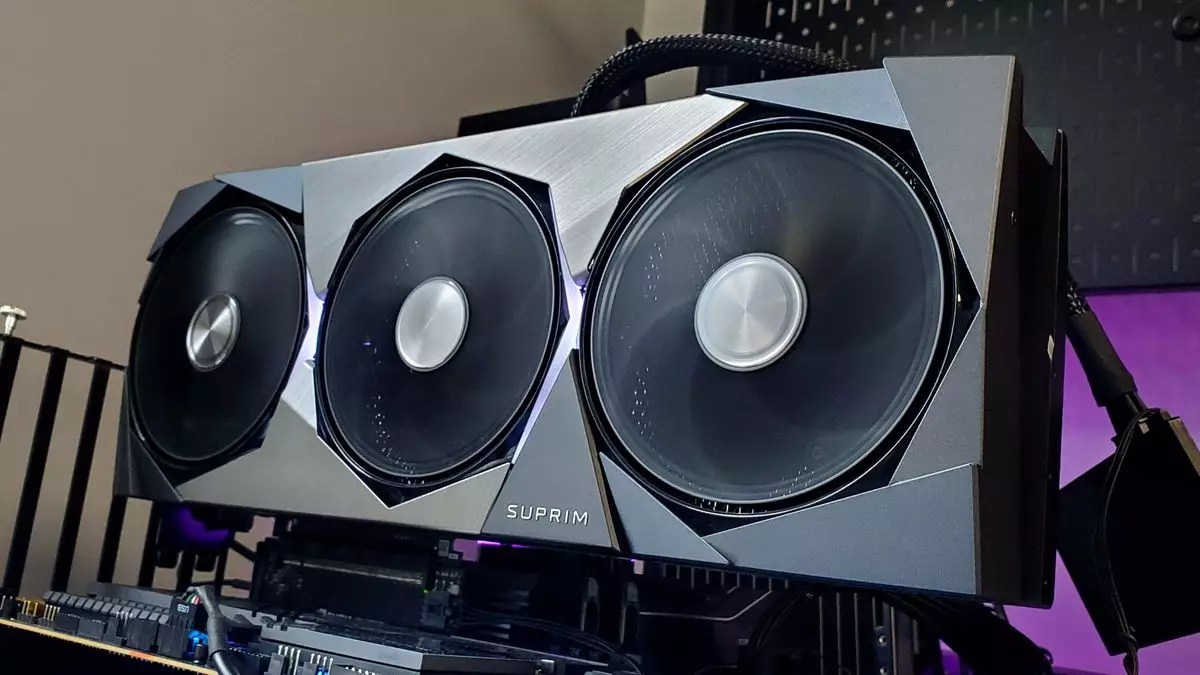The launch of Nvidia’s RTX 50-series graphics cards has left a sour taste in the mouths of many gamers and technology enthusiasts alike. Industry buzz often tends to build anticipation to fever pitch—after all, Nvidia has been a titan in the graphics card market for years. However, the reality that unfolded was particularly stark: low stock availability, inflated prices, and the performance claims—once positioned as groundbreaking—have now become questionable at best. While some fans hoped for a revolution in gaming experience, the changes have been more of a stumble than a leap, underscored by a flurry of mixed reviews.
Adding to the discontent are the details surrounding the recent price reduction of these cards in select regions, such as Europe and the UK. While it may appear to be a silver lining, the caveats surrounding this price cut highlight the troubling state of the RTX 50-series. This complex scenario raises questions: Are reductions in price significant enough to influence purchaser behavior? Or are they just a predominate illusion based on a few select models that aren’t even readily available?
Understanding Stock and Supply Issues
One of the more disheartening facets of this launch is the scant availability of these GPUs. Despite Nvidia’s optimistic proclamations during their latest earnings call about an increase in supply, most consumers are still greeted with the all-too-familiar “out of stock” status whenever they lookout for these new GPUs. There’s a rising frustration among gamers who eagerly await access to what should be state-of-the-art technology. The continued struggles for availability suggest that supply chain disruptions are more than just a passing phase; rather, they are indicative of deeper systemic issues within Nvidia’s production lines or marketing strategies.
It’s bewildering to consider the mixed messages being sent to consumers. While AMD seems to enjoy a more favorable reception—having recorded sales of their RX 9070 and RX 9070 XT cards—Nvidia finds itself grappling with disappointing numbers in a similar vein. What appears curious is that the fundamental problems of supply and high prices plague both parties, yet the reaction to Nvidia’s missteps has been notably harsh. This added scrutiny is certainly warranted, especially when a large percentage of the gaming community has come to expect higher performance and availability due to Nvidia’s historic dominance.
Price Cuts: What Do They Really Mean?
There are whispers of a price reduction for certain Founders Edition cards, yet the reality is somewhat less rosy. The slight drops of around 4-5% can hardly be deemed a tangible response to consumer outcry; they seem more like an attempt to adjust to shifting currency values rather than a commitment to fair pricing or customer satisfaction. The RTX 5070 Ti, oddly isolated in this price-cut saga due to its lack of a Founders Edition variant, exemplifies the fractured landscape of Nvidia’s offerings. This creates a perception of disparity: Is Nvidia truly keen on fostering a congenial relationship with its customer base, or is it merely reacting to market pressures with superficial measures?
As for the international marketplace, only certain territories are benefitting from these shifts in pricing, further complicating the landscape for consumers unfamiliar with the minutiae of regional pricing. Without a universal reduction and broader stock availability, genuine affordability remains a distant notion for many would-be purchasers.
The Bigger Picture: Market Dynamics and Competitive Landscape
In a market saturated with uncertainty and inflated expectations, gamers are seeking products that offer genuine value. The price reductions still leave many questioning their intent. Are they simply an overture to regain lost ground or a substantial strategy aimed at enhancing usability? Such dynamics could potentially reshape market behaviors in the long run, where consumers might become more discerning about not just price points, but also the reliability of stock and timeliness of launches.
Moreover, AMD’s performance in the midst of Nvidia’s struggles presents a considerable challenge to Nvidia’s market might. With outreach strategies shifting as consumers test the waters of brand loyalty and performance offerings, it’s clear that neither Nvidia nor AMD can afford to rest on their laurels. When the scales tilt in favor of one competitor, the consequence for Nvidia could be an erosion of its customer base if they fail to act decisively and transparently in the face of ongoing challenges.
Thus, the RTX 50-series launch story reflects not just a troubling beginning but also hints at a pivotal moment for Nvidia as they navigate tumultuous waters. The decisions they make in response to current perceptions could chart the course for their future in an ever-evolving playground.


Leave a Reply